7 Best U.S. Road Trips for History Buffs

Even if you spend a lot of time reading about history in books and watching documentaries, there’s nothing that can replace visiting the sites where important events took place. And while there are plenty of cities with interesting histories you can plan a vacation around, why not get in a car and chart out a path with multiple destinations? If you want to drive back in time, there are a few itineraries you should consider when planning. Read on for the best U.S. road trips for history buffs, according to experts.
RELATED: 6 Iconic American Diners to Hit on Your Next Road Trip.
1
The “Foundations of Democracy” Trail in the Mid-Atlantic
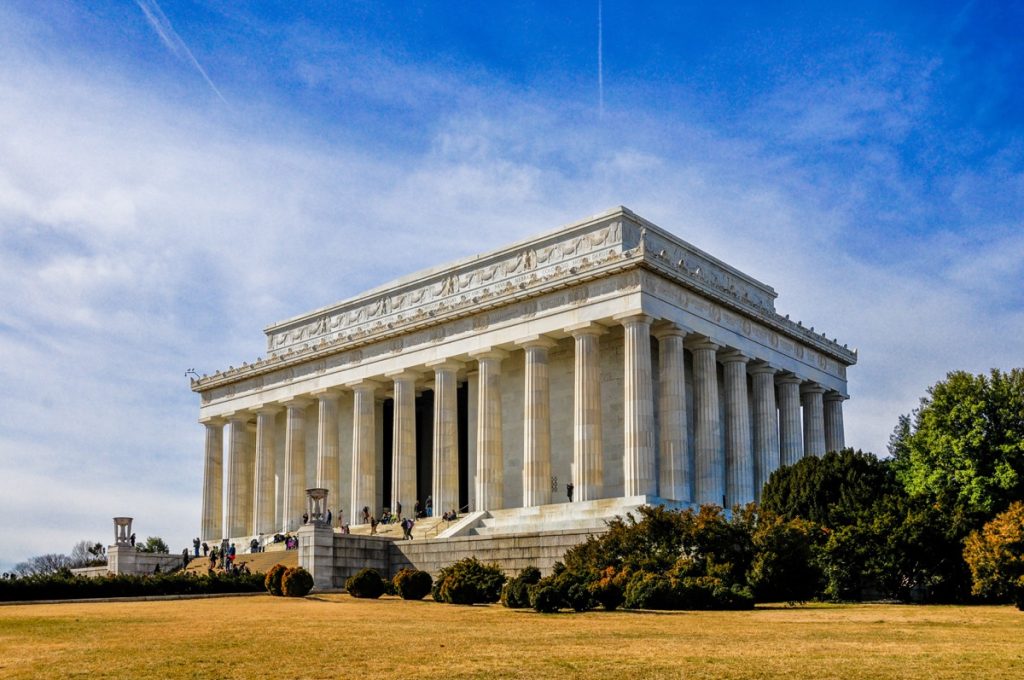
Reaching back centuries to the earliest days of American settlement by European colonizers is one of the best ways to understand how the country eventually developed. One way to do that is a 180-mile long route that winds through the Mid-Atlantic states, covering important sites along the way, says Mary Zell Galen, history expert and architectural survey data analyst at Maryland Historical Trust.
Start your road trip with a visit to Historic Jamestowne, Virginia, which was home to the first democratically elected legislative body in British North America in 1619. Here, you’ll be able to watch an active archaeological dig and see artifacts found at the fort, while also getting the option to visit nearby Colonial Williamsburg and Yorktown Battlefield.
Next, travel north to James Madison’s Montpelier estate near Orange, Virginia. Here, you can learn more about his complicated legacy as someone who is known as a major architect of the U.S. Constitution and also owned enslaved people. Galen suggests The Mere Distinction of Colour exhibit to learn more about this in particular. On your way out, you’ll also be near Thomas Jefferson’s Monticello and George Washington’s Mount Vernon.
The next stop in Washington, D.C., offers no shortage of landmarks and spectacles. One notable tour includes the U.S. Capitol, where you’ll see the Rotunda and National Statuary Hall. After, don’t miss exploring the many monuments and memorials on the National Mall, including the Lincoln Memorial where visitors can stand on the very spot where Martin Luther King, Jr. gave his “I Have a Dream” speech.
From there, travel west to Antietam National Battlefield in Sharpsburg, Maryland, to explore the history of the Civil War. Even though this battle marked the single bloodiest day in American history, the Union’s success allowed Abraham Lincoln to issue the Emancipation Proclamation. Galen says to be sure to climb the observation tower to take in the scope of the battlefield during your visit.
You can then wrap up your trip in Gettysburg, Pennsylvania. After visiting the battlefields, you can also stop by the Eisenhower National Historic Site, which is the former home of President Dwight D. Eisenhower. Here, you’ll be able to explore his role on D-Day during World War II and the Cold War.
2
A Ride Through Black History
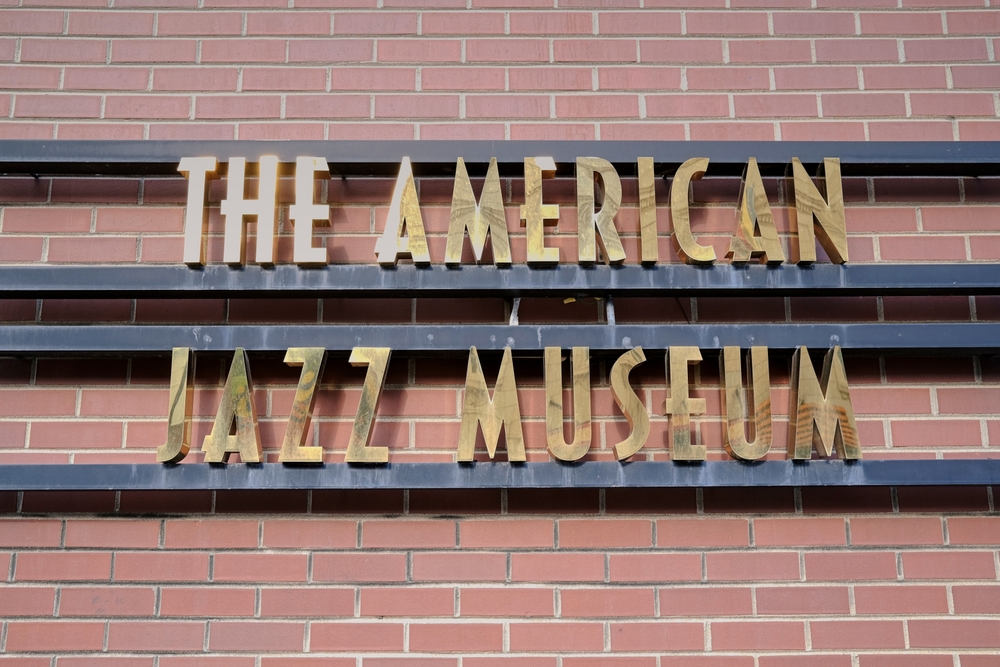
America’s history has been shaped by the experiences of all its inhabitants. According to Anthony Love, travel expert and founder of Traveling While Black, a road trip to visit Black historical landmarks across the U.S. is one of the best ways to experience the vital element of our nation’s culture.
He suggests starting off the journey in Kansas City, Missouri. “Beyond being home to great Bar-B-Que, Kansas City is also the location of the biggest collection of African American history in the country within the Historic 18th and Vine District,” he says. “That Black history can be experienced today with the Negro Leagues Baseball Museum, the American Jazz Museum, and the Black Archives of Mid-America.”
From there, you can continue on to Topeka, Kansas, to visit the Brown v. Board of Education National Historical Park. “This National Historical Park offers a Museum that is housed in what was formerly Monroe Elementary, the school at the center of the landmark decision on Brown v. Board of Education,” Love says. “The museum is dedicated to telling the story around the decision that would end segregation within American schools.” He adds that the park offers tours and is also a part of the National Civil Rights trail.
The next stop will be in the “almost hidden” town of Nicodemus, Kansas. “You have to drive a little ways off of Highway 70 to get to it. But it is worth it because you will experience the National Historic Site dedicated to the oldest and only remaining Black settlement west of the Mississippi River,” Love tells Best Life. “Five of the original historic buildings still stand, and there are plaques scattered throughout the park telling the interesting history of the town.”
From there, you can wrap up your drive in the Mile High City. “Within Denver is the Five Points District, the city’s historic Black neighborhood as well as the epicenter of the roaring Jazz culture that helped Denver become known as Harlem of the West,” says Love. “Today visitors can explore the history with a walking tour through the district or even better at the multiple museums that include the Black American West Museum and Styles African American Heritage Center. There’s even a Black history museum on the third floor of the Blair Caldwell African American Research Library.”
RELATED: 6 Unforgettable Road Trips Inspired by Famous Books.
3
Retrace the Lewis and Clark Expedition’s Steps.
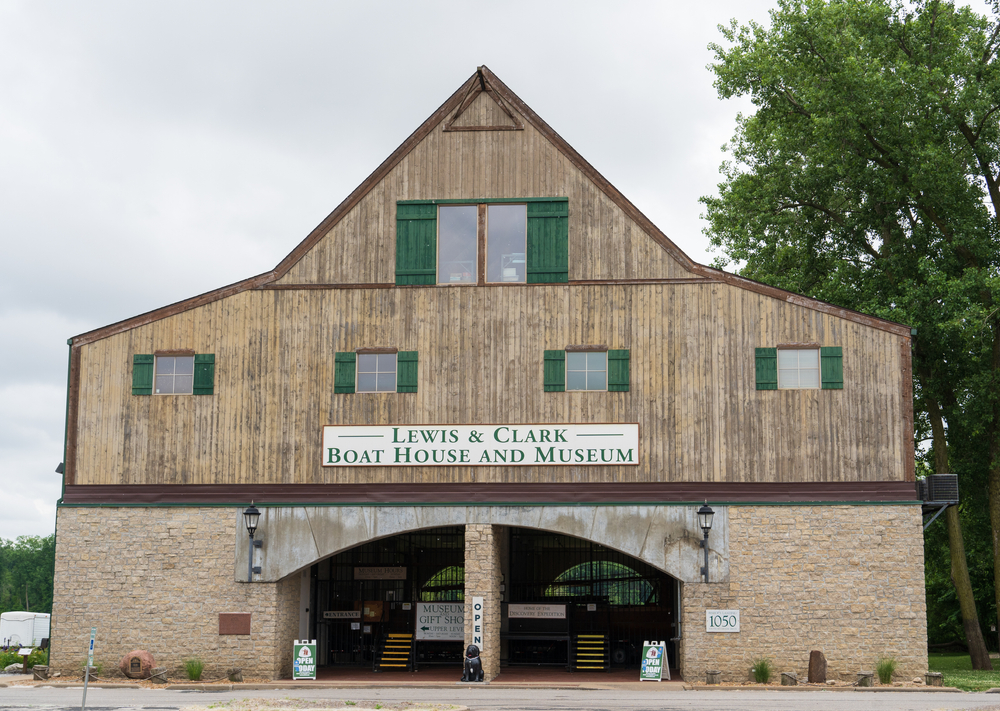
Long treks across the U.S. didn’t just start with the advent of the automobile.
“Perhaps the original ‘road trippers,’ [Meriwether] Lewis and [William] Clark covered incredible distances in 1804-06,” says Becky Hart, travel expert and content marketing strategist at Seven Corners Travel Insurance. “If you follow the official Lewis & Clark National Historic Trail, you’ll follow in their footsteps from Pennsylvania to Oregon with more than a dozen other states in between.”
Pittsburgh is often considered the start of the explorers’ journey where they launched their adventure on the Ohio River. You can start your journey there, too, enjoying numerous riverside parks and historical sites where many believe Lewis and Clark stayed for a night.
The road trip then continue through parts of West Virginia, Ohio and into Louisville, Kentucky, where you might consider stop at the Lewis and Clark Experience at the Frazier History Museum. According to Hart, it’s one of the most family-friendly sites on the trail.
The path continues on to Illinois, where you’ll find many old forts that hosted Lewis and Clark as they made their final arrangements for westward travel through the lands recently acquired by the U.S. via the Louisiana Purchase. “Places like Fort Kaskaskia, Fort Massac and Camp Dubois are where they recruited additional men and bought more supplies,” says Hart. “History buffs will love the deep dive into the men’s preparations.”
As you travel through Missouri, she suggests stopping in St. Charles, just outside St. Louis, for the Lewis & Clark Boat House and Museum. “St. Charles also owns the distinction of being the first permanent European settlement on the Missouri River,” Hart says. “This likely was a key reason Lewis and Clark stopped here, the last settlement before heading into territory that was largely unvisited by non-indigenous people.”
You’ll then reach what would have been the beginning of the wilds for Lewis and Clark with a visit to the Lewis and Clark National Historic Trail Visitor Center in Omaha, Nebraska. Here, there are self-guided audio tours and Ranger programs to show the challenges the explorers would have encountered during their westward journey.
Your road trip will then take you through the Dakotas and eventually into Montana where you’ll want to visit Travelers’ Rest State Park. “Today it’s a National Historic Landmark—and the only Lewis and Clark campsite that has had its location verified with archeological evidence,” says Hart.
Continuing west, some people choose to end their Lewis and Clark road trip in Cape Disappointment, Washington, named when earlier explorers were disappointed to find out they’d ended up in the Columbia River Bay.
“However, my favorite site to wrap up the journey is Fort Clatsop in Astoria, Oregon,” Hart says. “The expedition wintered here in early 1806 before exploring the Pacific Coast. What you’ll see today is a replica of the fort, re-created using Clark’s original sketches.”
RELATED: 10 Best Coastal Road Trips in the U.S.
4
A Pennsylvania Experience
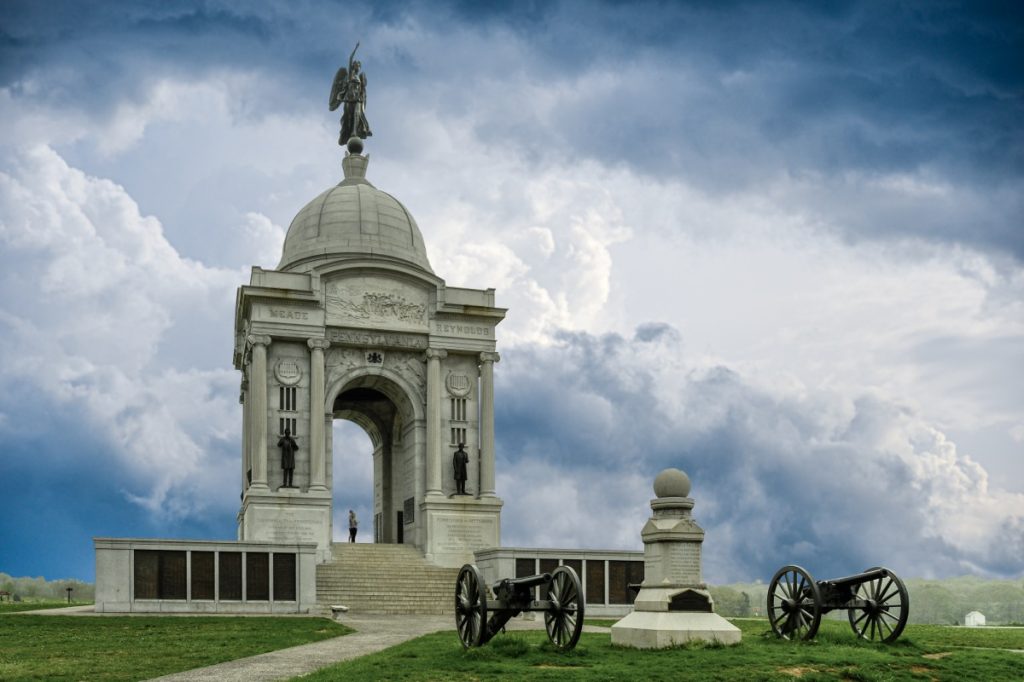
Pennsylvania is steeped in history that predates the Revolutionary War. This also makes it a convenient state for an easy road trip that history buffs will love.
Begin your trip in Philadelphia, where you’ll be able to visit historic landmarks including the Liberty Bell and Independence Hall, says Samantha Meabon, travel blogger at PA on Pause.
From Philadelphia, you should then head west to Valley Forge, where you’ll get to learn more about one of the most pivotal sites in the Revolutionary War. You can then head to Gettysburg, where an equally significant part of Civil War history played out.
Continuing across southern Pennsylvania, you’ll also cover some French and Indian War history at Fort Necessity. Meabon says you can then end the road trip by driving as far as you’d like on the Historic National Road.
5
Early American History Throughout the Northeast
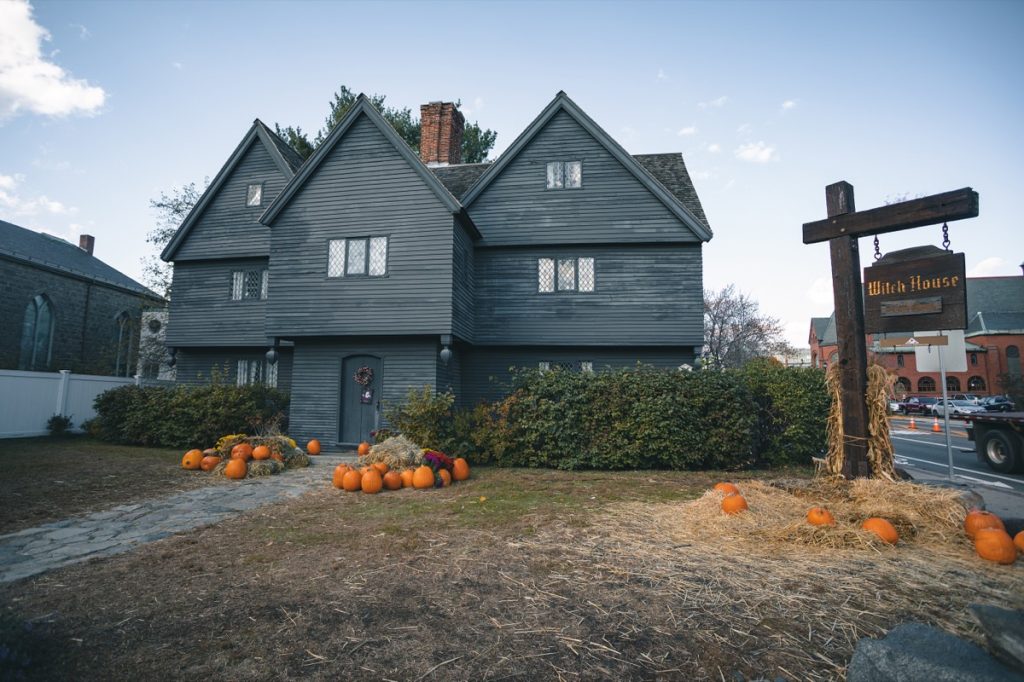
Learning more about the earliest days of the U.S. is easy with a drive through Northeast. According to Amber Haggerty, travel blogger and founder of Amber Everywhere, a road trip starting in Philadelphia and heading up to costal New England covers plenty of ground.
Starting with important landmarks in Philadelphia, travelers can then carry on to New York City, where they can visit major landmarks like the Statue of Liberty and Ellis Island. As you continue to drive north, she suggests making stops to see spots like Plymouth Rock; Harvard University in Cambridge, Massachusetts; and historic Salem, Massachusetts, home to the infamous witch trials of the 17th century. Once you reach Bar Harbor, Maine, end with a popover and a walk around Jordan Pond in Acadia National Park.
Just make sure to get out of the car to explore. “Definitely leave a few days to explore Philadelphia, which is packed with other museums and sights for American history buffs,” Haggerty suggests. “The Edgar Allen Poe Museum and the Benjamin Franklin Museum, for example, were both smaller museums that I enjoyed when I visited.”
6
Women’s Rights History Road Trip in New York State
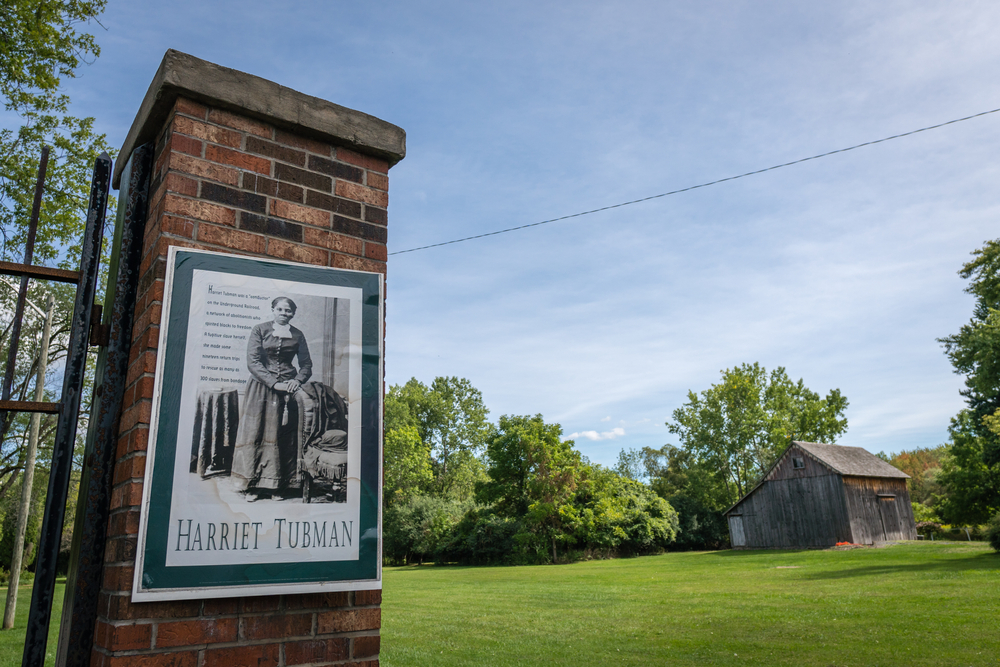
New York has a wide-ranging history when it comes to women’s rights. Within the span of a few days, stops around the state take you through the suffragist movement and women’s roles in the abolition of slaves to more modern history, including women’s impact on American politics and entertainment, says Hart.
“There are few places better to start your women’s history road trip than in Seneca Falls,” she tells Best Life. “It’s home of the Women’s Rights National Historical Park, the site where famous suffragists like Elizabeth Cady Stanton delivered the Declaration of Sentiments arguing that women deserve the same rights as men, and the National Women’s Hall of Fame.”
She says travelers shouldn’t miss the chance to stop by nearby Auburn to visit the Harriet Tubman National Historical Park. “Here, you can pay your respects to the incredible Underground Railroad conductor, credited with saving the lives of more than 300 enslaved people, by visiting her gravesite at Fort Hill Cemetery.”
From there, head east to Rochester for the National Susan B. Anthony Museum and House. Anthony is renowned for her activism and for helping to draft the 19th Amendment that gave women the right to vote. The museum, which now houses artifacts dedicated to Anthony’s life, was once her home and where she was arrested for voting in 1872.
Enjoy a more light-hearted touch on history by driving south to Jamestown, were you’ll find the Lucille Ball & Desi Arnaz Museum. “Considered the First Couple of Comedy, Lucy and Desi founded Desilu Studios together,” says Hart. “At the peak of its success in the 1950s, it was resetting cultural boundaries via entertainment. Today, the museum features studio sets, costumes, and more from Lucy’s prolific television career.”
Then, head east toward New York City for one of your final stops in Hyde Park at Eleanor Roosevelt’s home, Val-Kill—which is the only National Historic Site dedicated to a First Lady.
“Throughout her husband’s presidency, Eleanor dedicated herself to the cause of minorities, the poor, and other underrepresented groups, sometimes accomplishing more with her unofficial diplomacy than elected officials could,” says Hart. “After her husband’s death, Val-Kill became Eleanor’s primary home where she continued her life’s work.”
However, Hart encourages road trippers to chart their own course beyond these highlights. “New York is packed with homes and museums dedicated to the rich history of women’s impact on the U.S. These sites showcase the work done for human rights—slave, Indigenous, immigrant, and other women—that created opportunities for future generations,” she says.
7
A Pass Through Historic Virginia
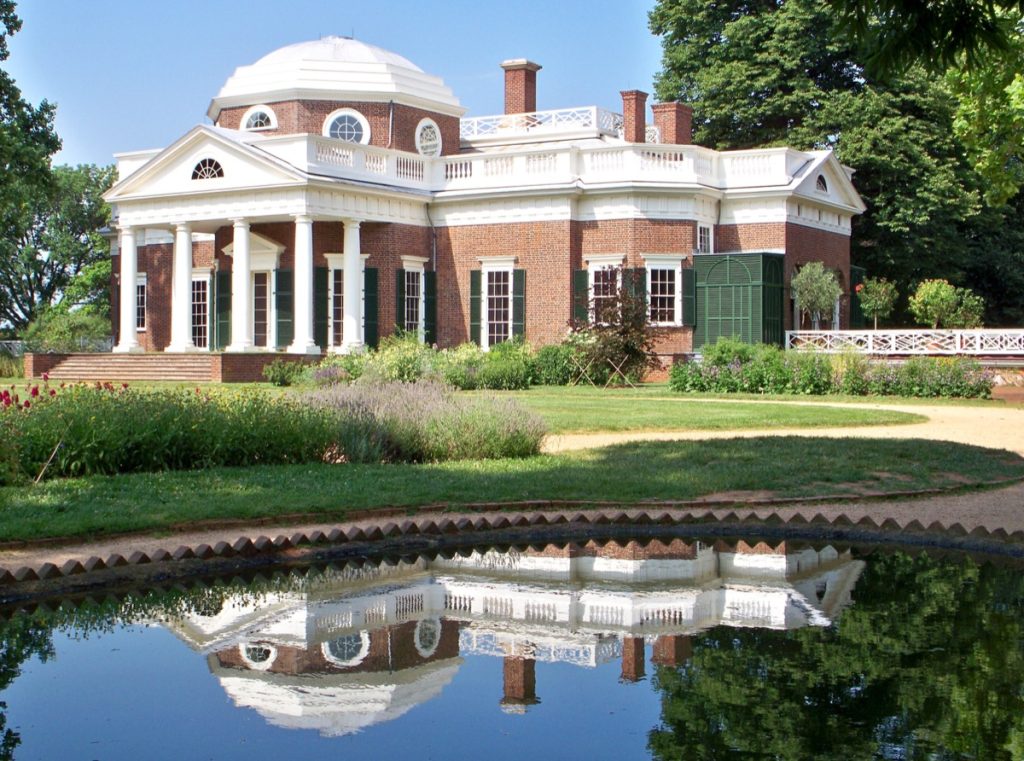
As one of the 13 original colonies, Virginia has no shortage of fascinating sites that predate the creation of the United States. Of course, this makes it ideal for those looking to learn more about the Revolutionary War.
According to travel expert and Virginia resident Leslie Carbone of Sancerres at Sunset, Alexandria is a great place to start your trip. “The best-known historic attraction here is Mount Vernon, the former home and final resting place of George and Martha Washington,” she says. “Visitors can tour the mansion and walk the extensive grounds. It also offers a spectacular view of the Potomac River.”
Once you’re finished taking in the site’s spectacular views of the Potomac River, make a visit to Gadsby’s Tavern in Old Town, which was founded in 1770. Guests can enjoy a small museum before sitting down to an authentic 18th century dinner.
The next stop will take road trippers through Charlottesville. “The main draw here is Monticello, the former home of Thomas Jefferson,” she says. “Visitors can tour the mansion and see some of the third president’s inventions, like the swivel chair and the dumb waiter.” She adds that a visit during warmer months will allow you to explore the estate’s impressive gardens, as well.
The trip becomes even more interesting once drivers reach what is known as the “Historic Triangle.”
“This close-knit area is home to three of the most significant spots in American history,” says Carbone. They include Jamestown, site of the first lasting English colony in North America. Travelers can explore the ruins of James Fort at Historic Jamestowne and visit a living-history museum at Jamestown Settlement.
Next is Colonial Williamsburg, which served as Virginia’s capital city at the time of the Revolution. “Today, it’s a living-history museum where you can ‘meet’ Virginians like George Washington and Thomas Jefferson, as well as important tradesmen like the printer and the gunsmith,” she says. “You can also tour replicas of historic buildings and dine in taverns. I genuinely believe that everyone interested in American history should visit here at least once.”
Then, carry on to Yorktown, which is the site of the decisive battle of the Revolutionary War. “Travellers can explore the battlefield, maintained by the National Park Service (NPS), as well as the American Revolution Museum.” she says.